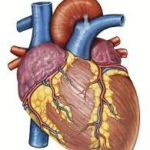From Calories to Energy: Demystifying Human Metabolism
Introduction
Metabolism is a fascinatingly complex biological process that plays a vital role in human health and well-being. It is through metabolism that our bodies convert the food we eat into energy, allowing us to function optimally. Understanding the nuances of human metabolism can provide insights into nutrition, weight management, and even disease prevention. This article aims to demystify metabolism by elaborating on its different phases—catabolism and anabolism—while exploring the role of calories, energy production, and factors influencing metabolic rates.
Understanding Metabolism: The Basics
Metabolism refers to the biochemical processes that occur within our bodies to maintain life. It encompasses all the chemical reactions that convert food into energy and the methods through which cells utilize that energy to perform various functions. Metabolism can be divided into two main categories:
-
Catabolism: This is the process through which complex molecules are broken down into simpler ones, releasing energy in the form of adenosine triphosphate (ATP). For instance, carbohydrates and fats are catabolized to generate the energy required for bodily functions.
- Anabolism: In contrast, anabolism refers to the construction of complex molecules from simpler ones, requiring energy input. This could include processes such as protein synthesis or the formation of cellular components.
Together, catabolism and anabolism form a dynamic equilibrium essential for survival.
A Closer Look at Energy
The energy released through catabolism is primarily measured in calories. A calorie is defined as the amount of energy needed to raise the temperature of one gram of water by one degree Celsius. When we consume food, our bodies metabolize these calories to fuel everything from cellular functions to physical activity.
There are three main macronutrients that provide calories:
-
Carbohydrates: Each gram of carbohydrates yields approximately 4 calories. They are the body’s preferred source of energy, particularly for high-intensity activities.
-
Proteins: Each gram of protein also provides about 4 calories. While they can serve as an energy source, proteins primarily play a role in building and repairing tissues.
- Fats: Each gram of fat contributes around 9 calories, making fats the most calorie-dense macronutrient. They are crucial for long-term energy storage and are necessary for various bodily functions, including hormone production.
The Concept of the Basal Metabolic Rate (BMR)
Your metabolic rate defines how quickly your body uses energy. The Basal Metabolic Rate (BMR) refers to the number of calories your body requires at rest to maintain basic physiological functions, such as breathing, circulation, and cell production. A person’s BMR can vary widely based on several factors, including age, gender, body composition, and hormonal balance.
Calculating BMR is crucial for understanding your overall energy needs. Several equations, such as the Harris-Benedict and Mifflin-St Jeor formulas, are commonly used to estimate BMR.
Factors Influencing Metabolism
-
Age: Metabolism naturally slows down as we age. This is partly due to a decrease in muscle mass and hormonal changes.
-
Sex: Generally, men tend to have higher BMRs than women, primarily due to a greater proportion of muscle mass.
-
Body Composition: Muscle tissue burns more calories at rest than fat tissue, meaning individuals with higher muscle mass will have higher BMRs.
-
Activity Level: Physical activity directly impacts total daily energy expenditure (TDEE). The more active you are, the more calories you burn.
- Hormonal Factors: Hormones such as thyroid hormones, insulin, and cortisol can significantly influence metabolism.
The Role of Nutrition in Metabolism
The food we consume greatly affects our metabolism. Different macronutrients impact metabolic pathways and energy utilization in various ways.
Carbohydrates and Metabolic Pathways
Carbohydrates are broken down into glucose, which is utilized by cells for energy. The metabolic pathway known as glycolysis converts glucose into pyruvate, producing ATP. In aerobic respiration, pyruvate enters the mitochondria and undergoes further breakdown, contributing to energy production.
The glycemic index (GI) of foods can influence how quickly carbohydrates are metabolized. Foods with a high GI lead to rapid spikes in blood sugar, necessitating a stronger insulin response.
Proteins: Beyond Energy
While proteins can be metabolized for energy, they are primarily utilized for building and repairing tissues. The process of deamination converts amino acids into acetyl-CoA or other intermediates that can enter the Krebs cycle for energy production. The nitrogen from amino acids is converted into urea and excreted, making protein metabolism more complex.
Fats: Slow and Steady Energy Release
Fats undergo a process known as beta-oxidation, breaking down fatty acids into acetyl-CoA units that can enter the Krebs cycle for energy production. Although fats provide a dense energy source, their metabolism is slower compared to carbohydrates, advocating for energy stability during prolonged activities.
The Energetics of Weight Management
Defining Energy Balance
Energy balance is the relationship between calories consumed and calories expended. It can be categorized as:
- Positive Energy Balance: When calorie consumption exceeds expenditure, leading to weight gain.
- Negative Energy Balance: When calorie expenditure exceeds consumption, resulting in weight loss.
- Neutral Energy Balance: When calorie intake and expenditure are equal, maintaining current weight.
Weight Loss and Metabolic Adaptation
When engaging in calorie-restricted diets, the body can undergo metabolic adaptation—a decrease in BMR resulting from reduced muscle mass and changes in hormonal balance. Therefore, sustainable weight loss often requires a combination of diet and exercise to enhance muscle preservation and maintain metabolic health.
The Role of Exercise
Physical activity not only contributes to calorie expenditure but can also enhance metabolic rate. Different forms of exercise promote different effects:
-
Cardiovascular Exercise: Activities like running, cycling, and swimming can improve cardiovascular health while providing immediate calorie expenditure.
-
Resistance Training: Lifting weights can boost muscle mass, thereby raising BMR and promoting a higher resting metabolic rate.
- High-Intensity Interval Training (HIIT): This form of training can maximize calorie burn in a shorter amount of time, and its effects on metabolism can last well beyond the workout itself.
Advances in Metabolic Health Research
As science continues to unveil the complexities of metabolism, several cutting-edge areas of research hold promise for improving metabolic health.
The Gut Microbiome
Emerging studies have shown that the gut microbiome can significantly influence metabolism, impacting energy storage, appetite regulation, and even metabolic diseases. A diverse and balanced microbiome can help optimize nutrient absorption and reduce inflammation, thereby supporting better metabolic function.
Genetics and Metabolic Function
Genetic predisposition can play a critical role in metabolic rates. Variations in genes responsible for metabolic pathways can affect weight gain, sensitivity to dietary components, and the risk of metabolic diseases like obesity and diabetes.
Personalized Nutrition
The future of nutrition research aims to develop personalized dietary strategies that cater to individual metabolic profiles. Factors like genetics, microbiome composition, and lifestyle could be integrated into personalized dietary recommendations to optimize metabolic health.
Conclusion
Understanding human metabolism is essential for optimizing health and wellness. By demystifying the intricate balance of catabolism, anabolism, and metabolic rates, individuals can make informed decisions regarding nutrition and lifestyle. As research progresses, it becomes increasingly clear that personalized approaches to metabolism and nutrition may hold the key to addressing the global challenges associated with obesity, metabolic disorders, and chronic illnesses.
References
- [Modern_footnote_source]
This article merely scratches the surface of a complex topic rich with science and emerging research. A deeper dive into each element will unveil the unique individuality of human metabolism and contribute to a broader understanding of health and wellness in today’s fast-paced world.


























Add Comment